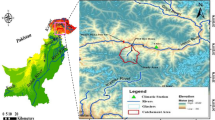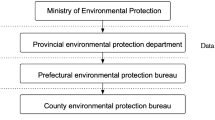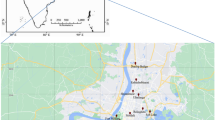Abstract
Lake Dianchi, one of the main water sources for Kunming, China, experiences severe cyanobacterial blooms due to rapid urbanization and local industrial development. Scientific interest in the mechanisms that cause blooms has been increasing. An integrated model combining rough set theory with binary logistic regression was used to examine the correlation between weather conditions and cyanobacterial blooms in Lake Dianchi based on daily monitoring data. The binary logistic regression yielded quantitative correlations between cyanobacterial blooms and the assessed meteorological variables, including temperature, wind velocity, and wind direction. The rough decision process connected the weather conditions and cyanobacterial blooms, which were used to verify the binary regression model results. It was shown that by comparing the methods, the rough decision-adjusted binary logistic regression model significantly improved model accuracy. The integrated model of cyanobacterial blooms in Lake Dianchi may inform decision-makers at local water purification plants of the water quality in the lake and assist them in making more cost-effective decisions.




Similar content being viewed by others
References
Conley, D. J., Paerl, H. W., Howarth, R. W., Boesch, D. F., Seitzinger, S. P., Havens, K. E., et al. (2009). Controlling eutrophication: nitrogen and phosphorus. Science, 323, 1014–1015.
Jorgensen, S. E. (1983). Applications in ecological engineering. New York: Academic.
Steinberg, C. E. W., & Hartmann, H. M. (1988). Planktonic bloom-forming cyanobacteria and the eutrophication of lake and rivers. Freshwater Biology, 20, 279–287.
Ministry of Environmental Protection of the People's Republic of China. (2009). 2008 yearly environment status report of China. http://jcs.mep.gov.cn/hjzl/zkgb/2008zkgb/. Accessed 2 Feb 2010.
Pieczynska, E., & Tarmanowska, A. (1996). Effect of decomposing filamentous algae on the growth of Elodea canadensis Michx. (a laboratory experiment). Aquatic Botany, 54, 313–319.
Ren, J., Zhou, H., & Sun, Y. (1997). Vertical distribution of light intensity and light compensation depth of submerged macrophyte in Lake Dianchi. Acta Scicentiarum Naturalum Universitis Pekinesis, 33, 211–214.
Bayley, S. E., & Prather, C. M. (2003). Do wetland lakes exhibit alternative stable states? Submersed aquatic vegetation and chlorophyll in western boreal shallow lakes. Limnology and Oceanography, 48, 2335–2345.
Song, Y., Qin, B., & Gao, G. (2007). Effect of nutrient on periphytic algae and phytoplankton. Journal of Lake Sciences, 19, 125–130.
MacKintosh, C., Beattie, K. A., Klumpp, S., Cohen, P., & Codd, G. A. (1990). Cyanobacterial microcystin-LR is a potent and specific inhibitor of protein phosphatases 1 and 2A from both mammals and higher plants. FEBS Letters, 264, 187–192.
Donk, E., & Hessen, D. O. (1993). Grazing resistance in nutrient-stressed phytoplankton. Oeclogia, 93, 508–511.
Tang, D. L., Kester, D. R., Ni, I.-H., Qi, Y. Z., & Kawamura, H. (2003). In situ and satellite observations of a harmful algal bloom and water condition at the Pearl River estuary in late autumn 1998. Harmful Algae, 2, 89–99.
Zhou, Y., Zhou, W.-Q., Wang, S.-X., & Zhang, B. (2004). Application of remote sensing technique to inland water quality monitoring. Advances in Water Science, 15, 312–317.
Bell, S. G., & Godd, G. A. (1994). Cyanobacteria toxins and human health. Reviews in Medical Microbiology, 5, 256–264.
Yoshida, T., Makita, Y., Nagata, S., Tsutsumi, T., Yoshida, F., Sekijima, M., et al. (1997). Acute oral toxicity of microsytin-LR. A cyanobacterial hepatotoxin, in mice. Natural Toxins, 5, 91–95.
Li, X., Liu, Y., Song, L., & Liu, J. (2003). Response of antioxidant systems in the hepatocytes of common carp (Cyprinus capio L.) to the toxicity of microcystin-LR. Toxicon, 42, 85–89.
Kanoshina, I., Lips, U., & Leppänen, J.-M. (2003). The influence of weather conditions (temperature and wind) on cyanobacterial bloom development in the Gulf of Finland (Baltic Sea). Harmful Algae, 2, 29–41.
Davis, T. W., Berry, D. B., Boyer, G. L., & Gobler, G. J. (2009). The effects of temperature and nutrients on the growth and dynamics of toxic and non-toxic strains of Microcystis during cyanobacteria blooms. Harmful Algae, 8, 715–725.
Stal, L. J., Staal, M., & Villbrandt, M. (1999). Nutrient control of cyanobacterial bloom in the Baltic Sea. Aquatic Microbial Ecology, 18, 165–173.
Paerl, H. W. (1996). A comparison of cyanobacterial bloom dynamics in freshwater, estuarine and marine environments. Phycologia, 35, 25–35.
Kameyama, K., Sugiura, N., Lsoda, H., & Maekawa, T. (2002). Effect of nitrate and phosphate concentration on production of microcystins by Microcystis viridis NIES 102. Aquatic Ecosystem Health & Management, 5, 443–449.
Zhang, W., Lin, Y.-Q., Guo, D.-F., Fu, J.-J., & Zhao, Y.-J. (2006). Influence of different nitrogen and phosphorus concentrations on growth, photosynthesis and microcystin production of Microcystis aeruginsa. Acta Hydobiologica Sinica, 30, 318–322.
Zheng, S., Yang, S., & Jin, X. (2005). Dynamic studies on the effect of nutrients on the growth of Microsytis aeruginosa. Chinese Journal of Environmental Science, 26, 152–156.
Jin, X.-C., Li, Z.-C., Zheng, S.-F., Yang, S.-W., Hu, X.-Z., & Chu, Z.-S. (2004). Studies on the growth characteristics of Microcytis aeruginosa. Research of Environmental Sciences, 17, 52–54.
Smith, V. H., Bierman, V. J., Jones, B. L., & Havens, K. E. (1995). Historical trends in the Lake Okeechobee ecosystem IV. Nitrogen:phosphorus ratios, cyanobacterial dominance, and nitrogen fixation potential. Archiv für Hydrobiologie, 107, 71–88.
Verkhozina, V. A., Kozhova, O. M., & Kusner, Y. S. (2000). Hydrodynamics as a limiting factor in the Lake Baikal ecosystem. Aquatic Ecosystem Health & Management, 3, 203–210.
Zhang, Y.-M., Zhang, Y.-C., Zhang, L.-J., Gao, Y.-X., & Zhao, Y. (2007). The influence of lake hydrodynamics on blue algal growth. China Environmental Science, 27, 707–711.
Qin, B., Hu, W., Gao, G., Luo, L., & Zhang, J. (2004). Dynamics of sediment resuspension and the conceptual schema of nutrient release in the large shallow Lake Taihu, China. Chinese Science Bulletin, 49, 54–64.
Anderson, E. J., & Schwab, D. J. (2011). Relationships between wind-driven and hydraulic flow in Lake St. Clair and the St. Clair River Delta. Journal of Great Lakes Research, 37, 147–158.
Cai, Q. M. (1998). Environmental and ecological studies of Lake Tai (I). Beijing: China Meteorological Press.
Ahn, C.-Y., Chung, A.-S., & Oh, H.-M. (2002). Rainfall, phycocyanin, and N:P ratios related to cyanobacterial blooms in a Korean large reservoir. Hydrobiologia, 474, 117–124.
Brunberg, A.-K., & Blomqvist, P. (2002). Benthic overwintering of Microcystis colonies of under different environmental conditions. Journal of Plankton Research, 24, 1247–1252.
Jin, X. C., Chu, Z. S., Yang, B., Zheng, S. F., Pang, Y., & Zeng, Q. R. (2008). Effects of temperature on growth, photosynthesis and buoyancy regulation of the cyanobacteria Microcystis flosaquae and Planktothrix mougeotii. Acta Scientiae Circumstantiae, 28, 50–55.
Gross, E. M., Meyer, H., & Schilling, G. (1996). Release and ecological impact of algicidal hydrolysable polyphenols in Myriophyllum spicatum. Phytochemistry, 41, 133–138.
Oliver, W., Walter, Z., & Elisabeth, M. (2002). Influence of Myriophyllum spicatum derived tannins on gut microbiota of its herbivore Acentria ephemerella. Journal of Chemical Ecology, 28, 2045–2056.
Scheffer, M., Carpenter, S., Foley, J. A., Folke, C., & Walker, B. (2001). Catastrophic shifts in ecosystems. Nature, 413, 591–596.
Kajak, Z., Rybak, J. I., Spodniewska, I., & Gadlewska-Lipowa, W. A. (1975). Influence of the planktivorous fish, Hypophthalmichthys molitrix, on the plankton and benthos of the eutrophic lake. Polskie Archiwum Hydrobiologii, 22, 301–310.
Wan, N., Song, L.-R., Wang, R.-N., & Liu, J.-T. (2008). The spatio-temporal distribution of algal biomass in Dianchi Lake and its impact factors. Acta Hydrobiologica Sinica, 32, 184–188.
Wang, C.-M., Xie, Z.-C., Song, L.-R., Xiao, B.-D., Li, G.-B., & Li, L. (2011). Dianchi Lake macroinvertebrate community succession trends and retrogressive analysis. Zoological Research, 32, 212–221.
Song, R.-B., Han, Y.-P., Pan, M., He, F., & Guo, Y.-Y. (2011). Preliminary investigation and analysis on the submerged plants ecological environment and distribution characteristics in Outer Dianchi Lake. Environmental Science Survey, 30, 61–64.
Kahru, M., Horstmann, U., & Rud, O. (1994). Satellite detection of increased cyanobacteria blooms in the Baltic Sea: natural fluctuation or ecosystem change? Ambio, 23, 469–472.
Onderka, M. (2007). Correlations between several environmental factors affecting the bloom events of cyanobacteria in Liptovska Mara reservoir (Slovakia)—a simple regression model. Ecological Modelling, 209, 412–416.
Janssen, F., Neumann, T., & Schmidt, M. (2004). Inter-annual variability in cyanobacteria blooms in the Baltic Sea controlled by wintertime hydrographic conditions. Marine Ecology Progress Series, 275, 59–68.
Laanemets, J., Lilover, M.-J., Raudsepp, U., Autio, R., Vahtera, E., Lips, I., et al. (2006). A fuzzy logic model to describe the Cyanobacteria Nodularia spumigena blooms in the Gulf of Finland, Baltic Sea. Hydrobiologia, 554, 31–45.
Pai, P.-F., & Lee, F.-C. (2010). A rough set based model in water quality analysis. Water Resources Management, 24, 2405–2418.
Golan, R., Ziarko, W. (1995). Methodology for stock market analysis utilizing rough set theory. Paper presented at the IEEE/IAEE Conference on Computational Intelligence for Financial Engineering, New Jersey, 9–11 April 1995.
Pawlak, Z. (2002). Rough set theory and its application. Journal of Telecommunications and Information Technology, 3, 7–10.
DeMaris, A. (1995). A tutorial in logistic regression. Journal of Marriage and the Family, 57, 956–968.
Kerber, R. (1992). ChiMerge: discretization of numeric attribute. AAAI-92 Proceedings, 123–128.
Acknowledgments
This research was conducted with the support of the “China National Water Pollution Control Program” (2008ZX07102-001) and the National Natural Science Foundation of China (grant no. 41101567 and no. 40701066).
Author information
Authors and Affiliations
Corresponding author
Appendix
Appendix
1.1 Twenty-five Rules Used in RDALR Model
-
1.
$$ {\text{A}}{{\text{T}}_{{3}}} \wedge {\text{H}}{{\text{T}}_{{2}}} \wedge {\text{L}}{{\text{T}}_{{1}}} \wedge {\text{HV}}{{\text{V}}_{{2}}} \wedge {\text{W}}{{\text{D}}_{{2}}} \wedge {\text{S}}{{\text{D}}_4} \to {y_0} $$
-
2.
$$ {\text{A}}{{\text{T}}_{{4}}} \wedge {\text{H}}{{\text{T}}_{{2}}} \wedge {\text{L}}{{\text{T}}_{{1}}} \wedge {\text{HV}}{{\text{V}}_{{3}}} \wedge {\text{W}}{{\text{D}}_{{2}}} \wedge {\text{S}}{{\text{D}}_{{4}}} \to {y_0} $$
-
3.
$$ {\text{A}}{{\text{T}}_{{3}}} \wedge {\text{H}}{{\text{T}}_{{1}}} \wedge {\text{L}}{{\text{T}}_{{1}}} \wedge {\text{HV}}{{\text{V}}_{{3}}} \wedge {\text{W}}{{\text{D}}_{{3}}} \wedge {\text{S}}{{\text{D}}_{{5}}} \to {y_0} $$
-
4.
$$ {\text{A}}{{\text{T}}_{{3}}} \wedge {\text{H}}{{\text{T}}_{{1}}} \wedge {\text{L}}{{\text{T}}_{{1}}} \wedge {\text{HV}}{{\text{V}}_{{2}}} \wedge {\text{W}}{{\text{D}}_{{3}}} \wedge {\text{S}}{{\text{D}}_{{4}}} \to {y_0} $$
-
5.
$$ {\text{A}}{{\text{T}}_{{4}}} \wedge {\text{H}}{{\text{T}}_{{3}}} \wedge {\text{L}}{{\text{T}}_{{1}}} \wedge {\text{HV}}{{\text{V}}_{{3}}} \wedge {\text{W}}{{\text{D}}_{{3}}} \wedge {\text{S}}{{\text{D}}_{{5}}} \to {y_0} $$
-
6.
$$ {\text{A}}{{\text{T}}_{{2}}} \wedge {\text{H}}{{\text{T}}_{{3}}} \wedge {\text{L}}{{\text{T}}_{{1}}} \wedge {\text{HV}}{{\text{V}}_{{1}}} \wedge {\text{W}}{{\text{D}}_{{3}}} \wedge {\text{S}}{{\text{D}}_{{5}}} \to {y_0} $$
-
7.
$$ {\text{A}}{{\text{T}}_{{4}}} \wedge {\text{H}}{{\text{T}}_{{3}}} \wedge {\text{L}}{{\text{T}}_{{1}}} \wedge {\text{HV}}{{\text{V}}_{{2}}} \wedge {\text{W}}{{\text{D}}_{{3}}} \wedge {\text{S}}{{\text{D}}_{{5}}} \to {y_0} $$
-
8.
$$ {\text{A}}{{\text{T}}_4} \wedge {\text{H}}{{\text{T}}_3} \wedge {\text{L}}{{\text{T}}_2} \wedge {\text{HV}}{{\text{V}}_1} \wedge {\text{W}}{{\text{D}}_2} \wedge {\text{S}}{{\text{D}}_4} \to {y_1} $$
-
9.
$$ {\text{A}}{{\text{T}}_{{4}}} \wedge {\text{H}}{{\text{T}}_{{3}}} \wedge {\text{L}}{{\text{T}}_2} \wedge {\text{HV}}{{\text{V}}_{{1}}} \wedge {\text{W}}{{\text{D}}_{{3}}} \wedge {\text{S}}{{\text{D}}_{{4}}} \to {y_1} $$
-
10.
$$ {\text{A}}{{\text{T}}_{{2}}} \wedge {\text{H}}{{\text{T}}_{{1}}} \wedge {\text{L}}{{\text{T}}_{{1}}} \wedge {\text{HV}}{{\text{V}}_{{1}}} \wedge {\text{W}}{{\text{D}}_1} \wedge {\text{S}}{{\text{D}}_3} \to {y_1} $$
-
11.
$$ {\text{A}}{{\text{T}}_{{2}}} \wedge {\text{H}}{{\text{T}}_{{1}}} \wedge {\text{L}}{{\text{T}}_{{1}}} \wedge {\text{HV}}{{\text{V}}_{{1}}} \wedge {\text{W}}{{\text{D}}_{{2}}} \wedge {\text{S}}{{\text{D}}_{{3}}} \to {y_1} $$
-
12.
$$ {\text{A}}{{\text{T}}_{{1}}} \wedge {\text{H}}{{\text{T}}_{{1}}} \wedge {\text{L}}{{\text{T}}_{{1}}} \wedge {\text{HV}}{{\text{V}}_{{2}}} \wedge {\text{W}}{{\text{D}}_{{3}}} \wedge {\text{S}}{{\text{D}}_{{4}}} \to {y_0} $$
-
13.
$$ {\text{A}}{{\text{T}}_{{3}}} \wedge {\text{H}}{{\text{T}}_{{1}}} \wedge {\text{L}}{{\text{T}}_{{1}}} \wedge {\text{HV}}{{\text{V}}_{{3}}} \wedge {\text{W}}{{\text{D}}_{{3}}} \wedge {\text{S}}{{\text{D}}_{{4}}} \to {y_0} $$
-
14.
$$ {\text{A}}{{\text{T}}_{{4}}} \wedge {\text{H}}{{\text{T}}_{{2}}} \wedge {\text{L}}{{\text{T}}_{{1}}} \wedge {\text{HV}}{{\text{V}}_{{2}}} \wedge {\text{W}}{{\text{D}}_{{3}}} \wedge {\text{S}}{{\text{D}}_{{4}}} \to {y_0} $$
-
15.
$$ {\text{A}}{{\text{T}}_{{3}}} \wedge {\text{H}}{{\text{T}}_{{2}}} \wedge {\text{L}}{{\text{T}}_{{1}}} \wedge {\text{HV}}{{\text{V}}_{{1}}} \wedge {\text{W}}{{\text{D}}_{{3}}} \wedge {\text{S}}{{\text{D}}_{{4}}} \to {y_0} $$
-
16.
$$ {\text{A}}{{\text{T}}_{{4}}} \wedge {\text{H}}{{\text{T}}_{{1}}} \wedge {\text{L}}{{\text{T}}_{{1}}} \wedge {\text{HV}}{{\text{V}}_{{2}}} \wedge {\text{W}}{{\text{D}}_{{3}}} \wedge {\text{S}}{{\text{D}}_{{4}}} \to {y_0} $$
-
17.
$$ {\text{A}}{{\text{T}}_{{4}}} \wedge {\text{H}}{{\text{T}}_{{3}}} \wedge {\text{L}}{{\text{T}}_{{1}}} \wedge {\text{HV}}{{\text{V}}_{{1}}} \wedge {\text{W}}{{\text{D}}_{{3}}} \wedge {\text{S}}{{\text{D}}_{{4}}} \to {y_1} $$
-
18.
$$ {\text{A}}{{\text{T}}_4} \wedge {\text{H}}{{\text{T}}_{{3}}} \wedge {\text{L}}{{\text{T}}_{{1}}} \wedge {\text{HV}}{{\text{V}}_{{1}}} \wedge {\text{W}}{{\text{D}}_{{2}}} \wedge {\text{S}}{{\text{D}}_{{4}}} \to {y_1} $$
-
19.
$$ {\text{A}}{{\text{T}}_{{3}}} \wedge {\text{H}}{{\text{T}}_{{1}}} \wedge {\text{L}}{{\text{T}}_{{1}}} \wedge {\text{HV}}{{\text{V}}_{{1}}} \wedge {\text{W}}{{\text{D}}_{{1}}} \wedge {\text{S}}{{\text{D}}_{{3}}} \to {y_1} $$
-
20.
$$ {\text{A}}{{\text{T}}_{{2}}} \wedge {\text{H}}{{\text{T}}_{{2}}} \wedge {\text{L}}{{\text{T}}_{{1}}} \wedge {\text{HV}}{{\text{V}}_{{2}}} \wedge {\text{W}}{{\text{D}}_{{3}}} \wedge {\text{S}}{{\text{D}}_{{4}}} \to {y_0} $$
-
21.
$$ {\text{A}}{{\text{T}}_{{2}}} \wedge {\text{H}}{{\text{T}}_{{1}}} \wedge {\text{L}}{{\text{T}}_{{1}}} \wedge {\text{HV}}{{\text{V}}_{{3}}} \wedge {\text{W}}{{\text{D}}_{{3}}} \wedge {\text{S}}{{\text{D}}_{{2}}} \to {y_0} $$
-
22.
$$ {\text{A}}{{\text{T}}_{{3}}} \wedge {\text{H}}{{\text{T}}_{{2}}} \wedge {\text{L}}{{\text{T}}_{{1}}} \wedge {\text{HV}}{{\text{V}}_{{3}}} \wedge {\text{W}}{{\text{D}}_{{3}}} \wedge {\text{S}}{{\text{D}}_{{4}}} \to {y_0} $$
-
23.
$$ {\text{A}}{{\text{T}}_{{4}}} \wedge {\text{H}}{{\text{T}}_{{1}}} \wedge {\text{L}}{{\text{T}}_{{1}}} \wedge {\text{HV}}{{\text{V}}_{{3}}} \wedge {\text{W}}{{\text{D}}_{{3}}} \wedge {\text{S}}{{\text{D}}_{{4}}} \to {y_0} $$
-
24.
$$ {\text{A}}{{\text{T}}_{{2}}} \wedge {\text{H}}{{\text{T}}_{{1}}} \wedge {\text{L}}{{\text{T}}_{{1}}} \wedge {\text{HV}}{{\text{V}}_{{2}}} \wedge {\text{W}}{{\text{D}}_{{2}}} \wedge {\text{S}}{{\text{D}}_{{4}}} \to {y_1} $$
-
25.
$$ {\text{A}}{{\text{T}}_{{4}}} \wedge {\text{H}}{{\text{T}}_{{2}}} \wedge {\text{L}}{{\text{T}}_{{2}}} \wedge {\text{HV}}{{\text{V}}_{{2}}} \wedge {\text{W}}{{\text{D}}_{{2}}} \wedge {\text{S}}{{\text{D}}_{{4}}} \to {y_0} $$
Rights and permissions
About this article
Cite this article
Liu, Y., Wang, Z., Guo, H. et al. Modelling the Effect of Weather Conditions on Cyanobacterial Bloom Outbreaks in Lake Dianchi: a Rough Decision-Adjusted Logistic Regression Model. Environ Model Assess 18, 199–207 (2013). https://doi.org/10.1007/s10666-012-9333-3
Received:
Accepted:
Published:
Issue Date:
DOI: https://doi.org/10.1007/s10666-012-9333-3




